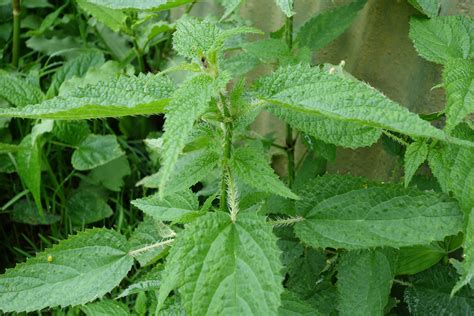Nettle Plant. The plant grows to be about 2 feet (0.61 m) to 4 feet (1.2 m) in height, and the leaves are arranged opposite, like with stinging nettle. There are 5 subspecies of which 4 have stinging hairs.

It's considered an aggressive invasive and has become established and common in certain areas. Stinging nettle (urtica dioica) is a plant with pointed leaves and white to yellowish flowers. A nettle plant is of the family urticaceae that includes tropical vines and shrubs.
It’s Known For The Stinging Hairs That Grow On The Stems And Leaves, And It Can Be Used As A Dry.
Stinging nettle is a nutritious plant popular in western herbal medicine. The plant grows to be about 2 feet (0.61 m) to 4 feet (1.2 m) in height, and the leaves are arranged opposite, like with stinging nettle. Full shade to partial shade:
The Leaves Are Serrated And Oval, And Large.
Urtica dioica (stinging nettle), is a perennial plant belonging to the family of urticaceae, genus urtica.despite the use of nettle in folk veterinary medicine is well documented, u. Nettles are a magnet for beneficial wildlife, they can be made into great plant food and are a surprisingly versatile ingredient in the kitchen. Studies suggest that it may reduce inflammation, hay fever symptoms, blood pressure and blood sugar levels — among other.
Nettles Are In The Genus Urtica And The Species Dioica.
The name of this plant is nettle plant. This plant has low severity poison characteristics. The nettle we’re used to in the uk is urtica dioica , a perennial plant full of iron, calcium, magnesium and nitrogen, which makes it incredibly nutritious for both other plants and humans.
Herbaceous In Cooler Climates, But With A Perennial Life Cycle:
Nettle leaf, also called urtica dioica, has been used in traditional medicine for many centuries. The perennial stinging nettle (urtica dioica) is a perennial, herbaceous plant with creeping roots.it is perhaps most troublesome in loose, newly cultivated soil, especially where phosphate levels are high. This plant is a part of the mint family lamiaceae.
There Are Between 30 And 45 Species Of Flowering Plants Of The Genus Urtica In The Family Urticaceae.
It primarily grows in damp, fertile soil. Today, it can be found all over the world, but its origins are in the colder regions of europe and asia. Its preference for damp, fertile and disturbed ground makes it a good coloniser of places enriched by human activities, such as.
